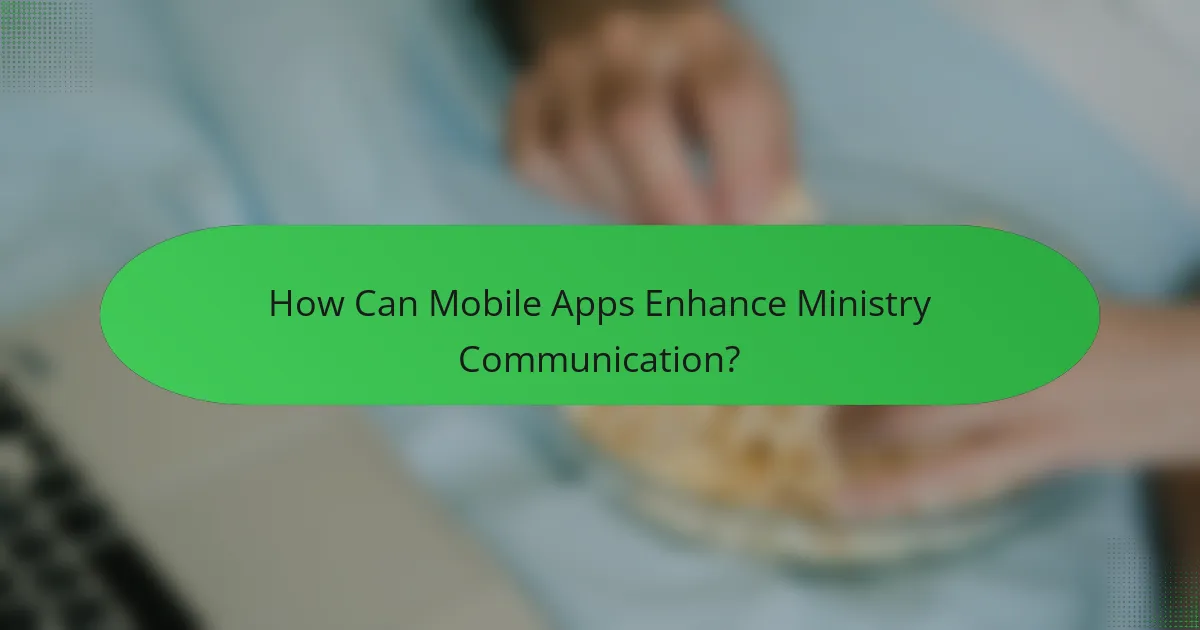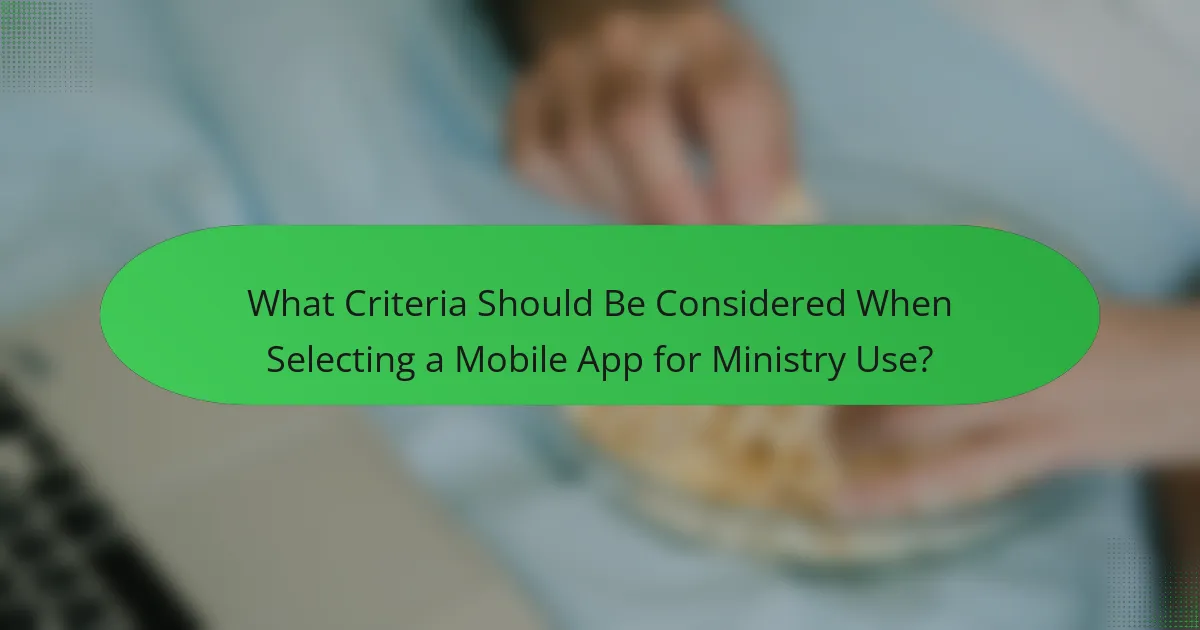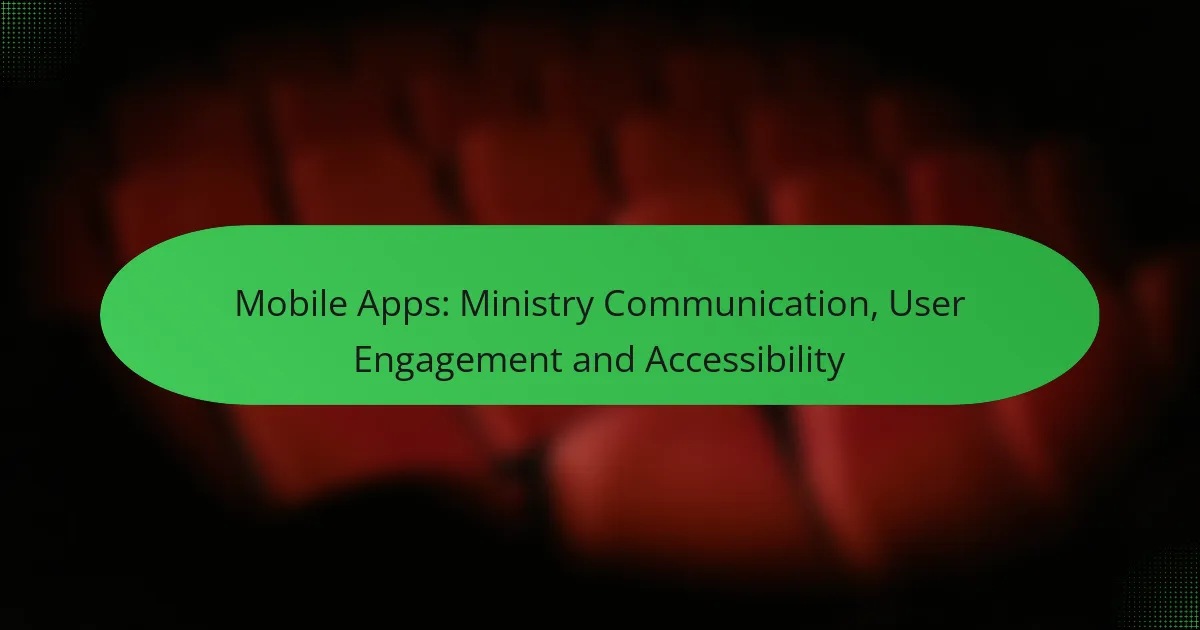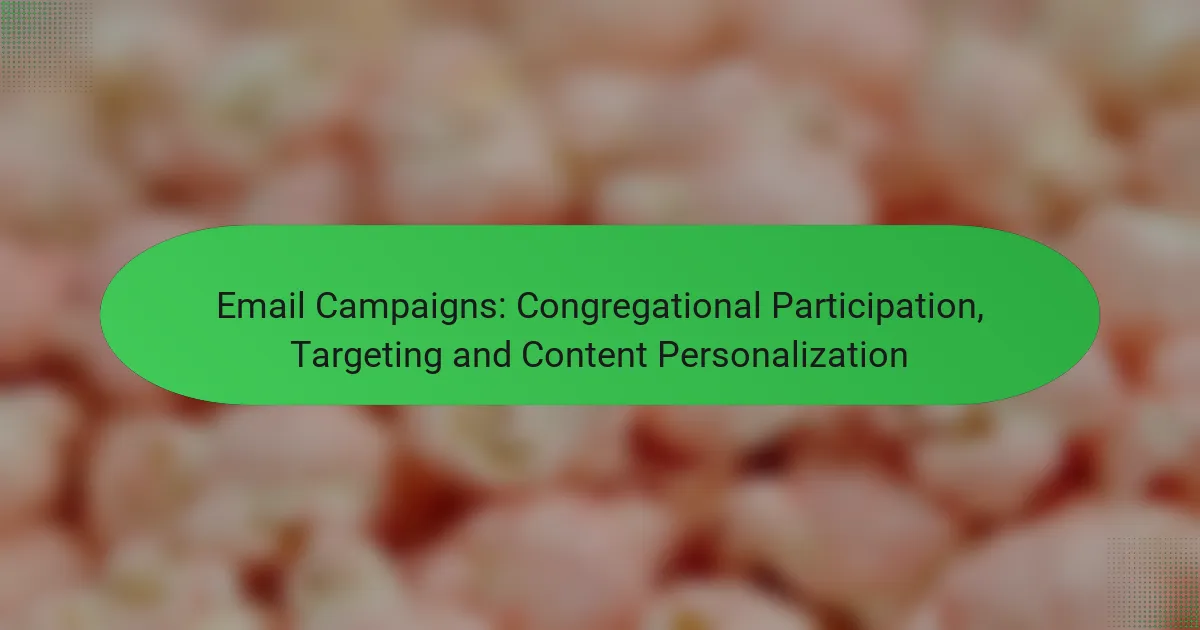Mobile apps play a crucial role in enhancing ministry communication by offering instant access to information and fostering direct interactions between ministries and their communities. By prioritizing effective user engagement through personalized experiences and intuitive design, these apps can significantly boost user retention and satisfaction. Additionally, incorporating accessibility features ensures that all users, regardless of their abilities, can navigate and interact with the app seamlessly.

How Can Mobile Apps Enhance Ministry Communication?
Mobile apps can significantly improve ministry communication by providing instant access to information and facilitating direct interaction between ministries and their communities. These tools streamline communication processes, ensuring that important messages reach users quickly and effectively.
Real-time updates
Real-time updates allow ministries to share information instantly, keeping users informed about critical developments. This feature is particularly useful during emergencies or significant events, where timely communication can make a difference.
For example, a ministry could use a mobile app to send alerts about natural disasters, policy changes, or urgent public health information, ensuring that users receive the latest updates as they happen.
Direct messaging features
Direct messaging features enable users to communicate with ministry representatives easily. This can enhance transparency and foster trust between the ministry and the community.
Ministries can implement chat functions within their apps, allowing users to ask questions or voice concerns directly. This two-way communication can lead to better understanding and responsiveness to community needs.
Event notifications
Event notifications keep users informed about upcoming events, meetings, or initiatives organized by the ministry. This feature helps increase participation and engagement within the community.
For instance, a ministry can send push notifications about town hall meetings, workshops, or public consultations, ensuring that users are aware and can plan to attend.
Feedback collection
Feedback collection tools within mobile apps allow ministries to gather insights from users about their services and initiatives. This information is crucial for continuous improvement and responsiveness to community needs.
Surveys and polls can be integrated into the app, enabling users to share their opinions easily. Regularly collecting feedback helps ministries understand user satisfaction and areas for enhancement.
Community engagement tools
Community engagement tools in mobile apps foster a sense of belonging and participation among users. These features can include forums, discussion boards, or social media integrations that encourage interaction.
By facilitating discussions and sharing information, ministries can build stronger relationships with the community. Engaging users through these tools can lead to increased civic participation and collaboration on local initiatives.

What Are the Best Practices for User Engagement in Mobile Apps?
Effective user engagement in mobile apps hinges on personalized experiences, interactive features, and intuitive design. Implementing best practices can significantly enhance user retention and satisfaction.
Personalized content delivery
Personalized content delivery tailors the app experience to individual user preferences and behaviors. By analyzing user data, apps can recommend relevant articles, products, or services, making interactions more meaningful.
To implement this, consider using algorithms that track user activity and preferences. For instance, a news app might show articles based on previously read topics, while an e-commerce app could highlight products similar to past purchases.
Gamification elements
Incorporating gamification elements can boost user engagement by making the app experience more enjoyable and rewarding. Features like points, badges, and leaderboards encourage users to interact more frequently and achieve specific goals.
For example, a fitness app might reward users with points for completing workouts, which can be redeemed for discounts or exclusive content. This approach not only motivates users but also fosters a sense of community among participants.
Push notifications strategy
A well-planned push notifications strategy keeps users informed and engaged without overwhelming them. Notifications should be timely, relevant, and personalized to encourage users to return to the app.
Consider segmenting your audience to send tailored messages based on user behavior. For instance, a travel app could notify users about flight deals or travel tips based on their previous searches, enhancing the likelihood of re-engagement.
User-friendly interface design
User-friendly interface design is crucial for maintaining user engagement. An intuitive layout, clear navigation, and responsive design ensure that users can easily access features and content.
Focus on simplicity and consistency in design elements. For example, using familiar icons and a straightforward menu structure can help users navigate the app without frustration. Regularly testing the interface with real users can also provide valuable feedback for improvements.

How Do Mobile Apps Improve Accessibility for Users?
Mobile apps enhance accessibility by incorporating features that cater to users with diverse needs, enabling easier navigation and interaction. These functionalities ensure that everyone, regardless of ability, can effectively use the app.
Screen reader compatibility
Screen reader compatibility allows visually impaired users to access app content through audio feedback. Apps that adhere to accessibility standards, such as WCAG, ensure that all text, buttons, and images have descriptive labels, making navigation seamless.
When developing an app, it’s crucial to test it with popular screen readers like VoiceOver for iOS and TalkBack for Android. This testing helps identify any areas where the app may not be fully accessible, ensuring a better user experience.
Voice command features
Voice command features enable users to control the app using spoken commands, which is particularly beneficial for those with mobility impairments. By integrating voice recognition technology, users can perform tasks hands-free, enhancing overall usability.
Implementing voice commands requires careful consideration of natural language processing capabilities to ensure accuracy. Developers should include a variety of commands for common actions, allowing users to navigate the app efficiently without relying on touch inputs.
Customizable text sizes
Customizable text sizes allow users to adjust font sizes according to their preferences, improving readability for those with visual impairments. This feature is essential in making content accessible without compromising the app’s design.
Offering a range of text size options can significantly enhance user experience. Developers should consider implementing a simple slider or preset options that allow users to easily modify text size without affecting the layout negatively.
Color contrast settings
Color contrast settings enable users to adjust color schemes to improve visibility, particularly for individuals with color blindness or low vision. High contrast between text and background colors is vital for readability and overall accessibility.
To implement effective color contrast settings, developers should provide options for users to select from predefined themes or create custom color combinations. Testing these settings against established contrast ratios ensures compliance with accessibility guidelines, enhancing user satisfaction.

What Criteria Should Be Considered When Selecting a Mobile App for Ministry Use?
When selecting a mobile app for ministry use, it is essential to consider budget constraints, target audience needs, integration capabilities, and security features. These criteria ensure that the app effectively meets the ministry’s objectives while being accessible and secure for users.
Budget constraints
Budget constraints play a crucial role in the selection of a mobile app for ministry purposes. It’s important to establish a clear budget range that includes development, maintenance, and potential upgrade costs. Many ministries operate on limited funds, so prioritizing cost-effective solutions is vital.
Consider options that offer flexible pricing models, such as subscription-based services or one-time purchase fees. Evaluate the total cost of ownership over time, including any hidden fees that may arise during usage.
Target audience needs
Understanding the target audience’s needs is essential for selecting a mobile app that will be widely adopted. Identify the demographics of the users, including age, tech-savviness, and accessibility requirements. This information will guide the app’s design and functionality to ensure it resonates with users.
Conduct surveys or focus groups to gather feedback on desired features and usability. Tailoring the app to meet these specific needs can significantly enhance user engagement and satisfaction.
Integration capabilities
Integration capabilities determine how well the mobile app can work with existing systems and tools within the ministry. Assess whether the app can seamlessly connect with databases, communication platforms, or other software used by the organization. This can streamline operations and improve efficiency.
Look for apps that support APIs or have pre-built integrations with popular platforms. This can reduce the time and resources needed for implementation and ensure a smoother transition for users.
Security features
Security features are paramount when selecting a mobile app for ministry use, particularly when handling sensitive information. Ensure the app complies with relevant data protection regulations and employs robust encryption methods to safeguard user data.
Evaluate the app’s authentication processes, such as multi-factor authentication, to enhance security. Regular updates and support from the app developers are also critical to address any emerging vulnerabilities.


